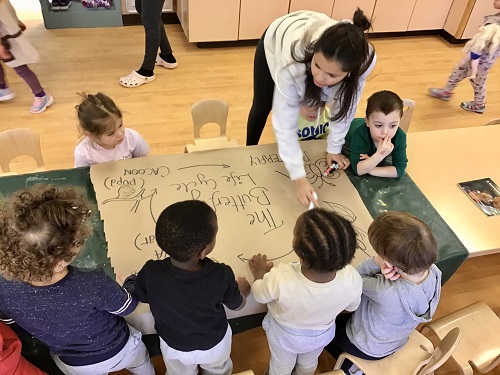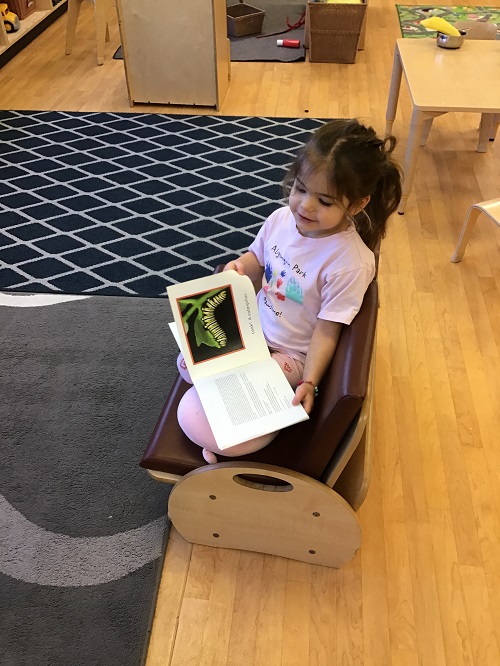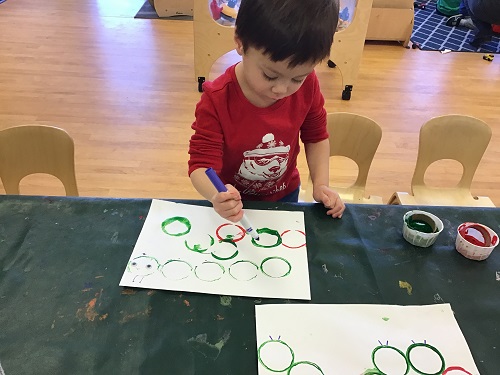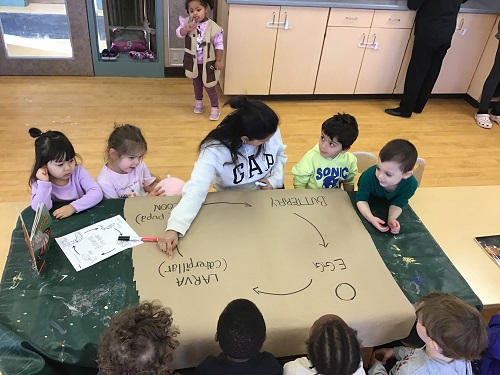We had many curious minds recently, asking how butterflies are created, what they eat and where they come from.
Observing Lylah and Ben in the reading nook, “Look Lylah it’s a cocoon,” he shared as he pointed to it in the book. “Yeah then it turns into a beautiful butterfly,” Lylah continued. For a short while, they went back and forth exploring a sense of well-being and positive responsive relations with one another. As peers entered the room, they joined in, flipping through the pages and asking for a turn. “Do we have the very hungry caterpillar?” Kaylee expressed to her educator. As the children were sitting as a group going through the pages of the very hungry caterpillar they were reciting and observing what the caterpillar ate each day and how much. They were spiking each other's interest through sharing their favourite fruit and as they were counting they were sharing how old they were. Through this natural engagement they were finding similarities and differences between themselves and their peers.
Over the course of the next few days we started looking at what we know and what we want to know about caterpillars. We began answering some of the questions that the children had from their initial exploration in the reading nook.
As a group, we began exploring the life cycle of a butterfly, what they eat, where they go when it gets cold and why they are so colourful.
As a group, we sat down with the children and had a discussion on the four different stages of a butterfly. “Does anyone know the first stage of a butterfly?” Shrishti asked the group. “An egg,” Julian shared, “Awesome job Julian!” and “What shape is an egg?” she continued, “It’s an oval,” Nathan expressed. This was a great way to explore their sense of memory and allow some children to learn from their peers with the knowledge they've gained through their own learning experiences.
We went through each stage with the children until we completed our very own diagram to put up in our room! Throughout this learning opportunity, a few of the children shared some stories that they had, seeing a caterpillar and butterfly at their houses, on the playground or with their parents. As educators we loved this natural learning opportunity that created a space for the children to explore their knowledge and expand on their sense of belonging with one another.
“Do caterpillars really eat cake?” Cillian wondered. “Great questions, let's check it out,” an educator replied. “Should we ask Google?” Liora continued. As we looked it up we quickly found out that caterpillars indeed do not eat cake, they eat leaves and roots from mother nature. “The very hungry caterpillar is so silly then,” Kaylee continued. Many of the children giggled in agreement.
The educators found some great photos to show the children where butterflies go when it gets cold, which was another curious question that they had. “Do they go somewhere warm, like the south?” Lylah shared, “I'm going to the Bahamas soon, will I find some somewhere?” she continued. “Let’s check it out,” educator Bailey replied. There were a few other guesses. Faris said, “Somewhere to keep them warm,” Dipo said “In the forest to sleep for the winter,” and Julian said, “They hibernate just like bears.”
The preschoolers were onto something, that's for sure. After doing our research we printed some photos for the children to see, and explored the opportunity of the preschoolers to identify the different places butterflies are found over the winter months. The majority of the time they are found hibernating in hollow trees, under loose bark or in a variety of crevices.
We still have a few unanswered questions that we hope to continue to explore over the next few weeks and to ask the experts when we go on our field trip. Keep an eye out as we are planning a trip to the Butterfly Conservatory in Cambridge on Thursday March 20th, 2025. This will be a great opportunity for the children to continue their ongoing learning outside of the classroom and get an opportunity to see and explore some butterflies first hand.
